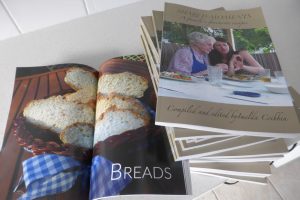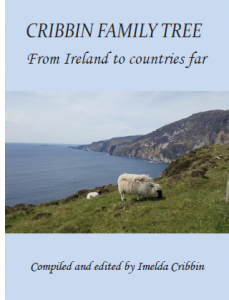As a first-generation Australian, I have an abiding interest in family history, family trees, stories and memoirs. Everyone has a story to tell if you are prepared to listen. This is why I joined Life Stories Australia. You can read my post at Using Notes to Fill in the Memory Gap. It is also why I completed a Diploma of Family History with the University of Tasmania, am a member of Oral History Victoria, am involved with several genealogy groups – more particularly with Moycullen Heritage in Ireland, and belong to a family history writing group where I can continue to evolve my own writing.

https://lifestoriesaustralia.com.au/
Writing your story or family history
Writing your story or your family’s history can be a daunting task. Over the years I have helped authors with their memoirs and biographies, in putting together their family’s history and in assisting countless others on how to find information or clues on their family’s past.
Further to this, a family history doesn’t have to be a recording of the people, branch charts, historic events, articles, family stories, anecdotes and photos. Thinking about the moments in history that impacted your relatives – the economic, social, political moments, the medical instances or climatic occurrences. These all add depth to understanding their journey and telling how, over the years, that journey was steered or how it may have left remaining trace elements in determining who you are today and/or how your life is playing out.
If you have a story to tell, let me help you edit it. Alternatively, if you don’t know where to start or don’t feel you have the writing skills to put ‘pen to paper’, writing your memoir, autobiography or family history for you is a service I can also provide.
Please have a look at my Testimonials page to see how I have helped clients publish their stories.
Ancestor research
Not everyone knows who their ancestors were and as a result are unable to put a family tree together. Spending time delving into records or knowing where to look can be daunting and time consuming. You can soon get in a muddle as you find yourself going off on tangents that lead you down unrelated rabbit holes, find that there are multiple people in your tree with similar names, or simply hit a brick wall. Believe me, I’ve been there! If you would like me to look for your ancestors and develop your family tree, this is something I can help with.
Classes
From 2022, I commenced facilitating short course classes on Writing your Life Story or Family History. These classes have be conducted in person, in groups of no more than eight participants, and cover a range of topics and information relating to how best you can record your life story or family history.
Some recent class testimonials include:
Imelda’s class was very informative and practical. Her ideas, techniques and examples have helped provide a structure to my writing project and lots of options on how to present my family story. Highly recommended. Judy
Thank you for the Writing Family History Course you have been running. I have learned so much and been positively inspired by your teaching. Your understanding of the subject and its vagaries, along with your advice on copyright etc. has been invaluable to me. Thank you so much for all your help. Elizabeth
Imelda as the facilitator at a recent course I attended was engaging and very knowledgeable. I would recommend the course to anybody wishing to write about their family history. Richelle
For information about future courses, please use the Contact form.
Writing options
There are several options when telling a personal story and several ways to present it.
Memoir
A memoir is a recollection of a pertinent experience, event, a moment in time or a memory supported by facts. Something that had a personal impact on you. The core focus of a memoir can relate to anything: a political event, an emotional event (whether joyful or traumatic), a physical event (whether it was an impact or one of endurance), or a journey of some sort. Lengths can vary from one page to book-length.
Autobiography
Like the memoir, an autobiography is written by you, however, it takes a longer format, often covering a broader expanse of time (for example, your working career) or your whole life.
Biography
This differs from the first two formats mentioned in that a biography is a story written and authored by a person about someone else. It can focus on specific events (as does a memoir) or the person’s life. The person writing the book is the author and, as such, their name will appear on the cover.
Each of the above often follow the traditional story telling format found in either fiction or non-fiction books: the opening scene (setting the focus for the story); developing the plot (creating an story arc by drawing on interrelated events and subplots); the climax (bringing the events to the highest point); the denouement (where everything is tied together conclusively so that the reader is shown what you, the character, has learned from the situation). The first two are typically written in first person present or past tense, with the biography written in third person, past or present tense. And because the first two are written by you, the author, it is specifically your point of view and perspective. It is your recollection of events. Whereas, the biography, written by someone else, allows for their perspective to influence the story.
However, what if you want to tell your story yourself, but you don’t want to put the ‘pen to paper’? In these instances, your story can be ghostwritten – where your story is written on your behalf but as if you wrote it. Ghostwriting entails interviewing you, writing up the story in draft format, allowing you to review it, making the relevant changes and, after you approve it, editing it ready for you to self-publish it, or submit to a traditional publisher or agent. Your name goes on the cover as the author and a contractual agreement is drawn up to cover things such as copyright entitlements, project times, writer-client expectations, dispute resolution etc.
The other thing to consider about these three types of story telling is that they are often commercial in nature. The audience is wide.
Life story
As the name suggests, it covers the life of the person concerned. Like the other three, it can be autographical, ghostwritten or biographical. However, often the life story, has a narrower target audience such as family, friends or specifically interested parties, and is not necessarily commercial in nature (although it can be).
The other factor to consider is that the life story doesn’t have to be about a person. It can cover the history of a business, a charitable organisation, a community group, a town or even just a building. If it has history and is interesting, then the story can be told! The other factory about a life story is the various formats it can take.
A life story can be presented in written format, oral format (voice recordings), through pictures (the photo essay – a combination of photos and minimal writing), videography or a memory box.
Family Histories
Further to the above options, you can write a family history spanning several generations. Obviously, this takes a lot of research that could include archival material (birth, death, marriage certificates, census papers, immigration papers), newspaper articles, photos, interviews and anecdotes, historical local and/or world events, how political and/or societal matters influenced the family, family heirlooms and objects, places and maps. The audience for these types of books will depend on you. If your local historical society is interested in your family’s history, then your market may well be wider than the immediate and/or extended family.
Writing Styles
The types of formats I have mentioned above also need to consider the style of writing you want to use. Some of these are explained on my Writing page.
Below are some of my own projects. I am currently researching my maternal line and writing my father’s life story.

Shared moments: A family’s favourite recipes.
A 160-page collection of favourite recipes and family photos
Self-published, hard copy in 2016.

Moycullen to Melbourne.
A two page history relating to my mother’s ancestral homeplace outside of Galway, Ireland for Moycullen Heritage, 2018. In print – Moycullen Matters, March 2018 and on website: https://moycullen.galwaycommunityheritage.org/content/people/annagh-to-melbourne

John Joseph Cribbin: Bachelor of Engineering, 1947.
A two page graduate profile written on behalf of my father to celebrate 70 years since he graduated as a civil engineer. University of Ireland Galway’s alumni magazine Cois Coiribe, 2018, pps.52-53: https://www.nuigalway.ie/coiscoiribe/

Cribbin family tree: From Ireland to countries far.
A 470-page colour printed history of the Cribbin family dating from c.1790 to present day.
Self-published, hard copy in 2020.